- Vibrant Annuals
- Petunias
- Marigolds
- Zinnias
- Varieties of Zinnias
- Growing Zinnias
- Uses for Zinnias
- In Conclusion
- Cosmos
- Impatiens
- Nasturtiums
- Calendula
- Key Features:
- Popular Varieties:
- Uses in the Garden:
- Growing Tips:
- Snapdragons
- Questions and Answers:
- What are the best annual flowers to plant in a flower garden?
- What colors do annual flowers come in?
- How often do annual flowers need to be watered?
- Can annual flowers be grown in pots or containers?
- Are annual flowers easy to care for?
- When is the best time to plant annual flowers?
- Videos: 7 Best Annual Flowers and Plants to Bring the ‘Wow’ Factor ✨
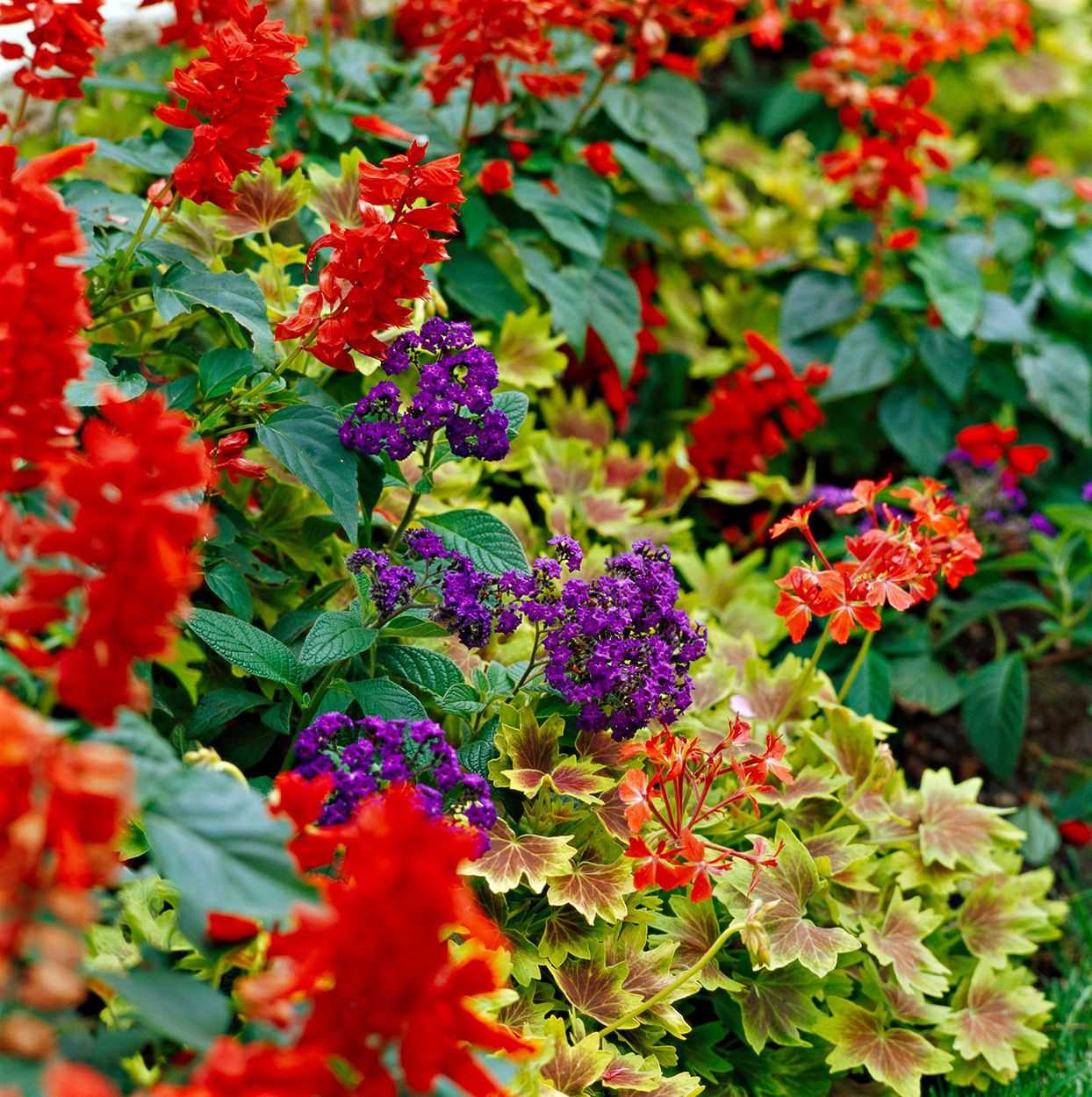
Are you looking to add a burst of colour to your garden next season? Look no further than these 14 vibrant annuals that are sure to make a statement in your flower beds. Whether you prefer bold and bright blooms or delicate pastel petals, there is something for everyone on this list.
One of the standout annuals on this list is the marigold. With its sunny yellow and orange flowers, it adds a cheerful pop of colour to any garden. Another popular choice is the petunia, which comes in a wide range of colours and can be grown as either a trailing or upright plant.
If you’re looking for something a little more unique, consider planting the stunning cosmos. With its daisy-like flowers in shades of pink, purple, and white, it is sure to be a focal point in your garden. The zinnia is another annual that offers a wide range of colours, from bright reds and oranges to soft pinks and whites.
“For a touch of elegance in your garden, try planting the salvia. With its tall spikes of flowers in hues of blue, pink, or red, it adds vertical interest and attracts hummingbirds and butterflies.”
If you’re looking to attract pollinators to your garden, consider planting the sunflower. Its large, vibrant yellow flowers are a favorite among bees and butterflies. Another great choice for pollinators is the cosmos, which is not only beautiful but also a great source of nectar for bees and butterflies.
For a whimsical touch, try planting the morning glory. This fast-growing vine produces stunning flowers in shades of blue, purple, pink, and white. Another vine to consider is the sweet pea, which is known for its fragrant blooms in shades of pink, purple, and white.
These are just a few of the vibrant annuals you can choose from for your flower garden next season. With their stunning colours and unique designs, they are sure to bring joy and beauty to your outdoor space. So go ahead, get planting, and enjoy a colourful garden all season long!
Vibrant Annuals
If you want to add a burst of color to your garden, vibrant annuals are the perfect choice. These flowers are known for their bright and bold hues that can instantly bring life and excitement to any outdoor space. Here are 14 vibrant annuals that will make your flower garden a colorful masterpiece:
- Petunias: These popular annuals come in a wide range of colors, including shades of pink, purple, red, and white. They are easy to grow and provide a stunning display with their trumpet-shaped flowers.
- Marigolds: Known for their warm and sunny colors, marigolds are a classic choice for adding vibrancy to your garden. They come in shades of orange, yellow, and gold, and are also great for repelling pests.
- Zinnias: Zinnias are another annual flower that comes in a variety of vibrant colors, such as red, pink, orange, and yellow. They are low-maintenance and can bloom throughout the summer.
- Geraniums: Geraniums are beloved for their vibrant shades of red, pink, and purple. These flowers are perfect for adding a pop of color to your garden beds or containers.
If you prefer a mix of colors, consider planting a variety of these vibrant annuals together. This combination will create a stunning and eye-catching display that will surely impress your guests. Here are some more vibrant annuals to consider:
- Lantanas
- Cosmos
- Salvias
- Impatiens
- Calibrachoas
- Verbena
- Coleus
- Dahlias
- Cockscombs
These annuals come in various colors and can be mixed and matched to create a stunning flower garden that bursts with vibrant shades. Whether you prefer warm hues like red and orange or cool tones like purple and blue, there is an annual flower that will suit your preferences.
| Annual Flower | Colors |
|---|---|
| Petunias | Various shades of pink, purple, red, and white |
| Marigolds | Shades of orange, yellow, and gold |
| Zinnias | Red, pink, orange, yellow |
| Geraniums | Red, pink, purple |
With these vibrant annuals, you can transform your flower garden into a colorful paradise. Whether you choose a single variety or a mix of different flowers, your garden will be a showcase of beauty and vibrancy.
Petunias
Petunias are one of the most popular annual flowers for a colourful flower garden. They come in a wide variety of colours, including pink, purple, blue, red, and white, allowing you to create stunning displays of vibrant blooms.
Here are some key details about petunias:
- Hardiness: Petunias are typically grown as annuals, although some newer cultivars may have better tolerance to cold weather.
- Light Requirements: Petunias thrive in full sun but can tolerate some shade, especially in hot climates.
- Watering: Petunias need regular watering to keep the soil moist. They don’t tolerate drought well.
- Soil: Well-draining soil is essential for petunias. They prefer a slightly acidic to neutral pH level.
- Spacing: When planting petunias, space them about 12 to 18 inches apart to allow for proper air circulation.
- Fertilizing: Petunias benefit from regular feeding with a balanced fertilizer to promote healthy growth and abundant blooms.
Petunias are versatile flowers that can be used in various garden settings. They are great for bordering flower beds, filling hanging baskets, or creating colorful container displays.
When selecting petunias for your garden, consider the different types available, such as cascading petunias, which are perfect for hanging baskets, or grandiflora petunias, which have large, showy flowers.
With their bright and cheery blooms, petunias are sure to add a pop of color to your garden and create a vibrant and inviting space for you to enjoy.
Marigolds
Marigolds are a popular annual flower that adds a vibrant touch to any garden. These cheerful flowers come in various shades of yellow and orange, and they bloom throughout the summer and fall seasons.
Here are some key features of marigolds:
- Easy to grow: Marigolds are known for their low maintenance and ability to thrive in most soil conditions.
- Attracts beneficial insects: These flowers attract pollinators like bees and butterflies, making them a great addition to a garden that supports biodiversity.
- Repels pests: The strong fragrance of marigolds also acts as a natural deterrent for pests like aphids and mosquitoes.
- Companion plant: Marigolds are often planted alongside vegetables like tomatoes and peppers to help deter pests and improve the overall health of the garden.
There are different varieties of marigolds to choose from:
- African marigolds (Tagetes erecta): These marigolds have large, double flowers and can grow up to 3 feet in height.
- French marigolds (Tagetes patula): French marigolds are smaller in size and produce numerous flowers in various colors.
- Signet marigolds (Tagetes tenuifolia): Signet marigolds are compact and have small, edible flowers with a citrusy flavor.
Marigolds are versatile and can be used in various ways in the garden:
- Bedding plants: Plant marigolds in flower beds to create a colorful display.
- Container gardens: Grow marigolds in pots or hanging baskets to add a pop of color to your patio or balcony.
- Companion planting: Intersperse marigolds among your vegetables to deter pests and enhance the aesthetics of your garden.
Overall, marigolds are a fantastic choice for any flower garden. Their bright colors, easy care, and pest-repelling properties make them a favorite among gardeners.
Zinnias
Zinnias are annual flowers that are known for their bold and vibrant colors. They are a popular choice for flower gardens due to their long-lasting blooms and low maintenance requirements. Zinnias come in a variety of colors, including red, pink, orange, yellow, and white, making them a great addition to any garden.
Varieties of Zinnias
There are several different varieties of zinnias to choose from, each with their own unique characteristics. Some popular varieties include:
California Giants – These zinnias produce large, double blooms in a wide range of colors. They can reach heights of up to 4 feet and make a stunning addition to any flower garden.
Thumbelina – Thumbelina zinnias are dwarf varieties that grow to be around 6-8 inches tall. They produce small, fully double blooms and are ideal for container gardening or smaller spaces.
Profusion – The Profusion series of zinnias are compact plants that produce an abundance of beautiful, single blooms. They are disease-resistant and come in a variety of colors, including cherry, orange, and white.
Cut and Come Again – As the name suggests, these zinnias are excellent for cutting and will produce more blooms after each cut. They are easy to grow and come in a range of colors.
Growing Zinnias
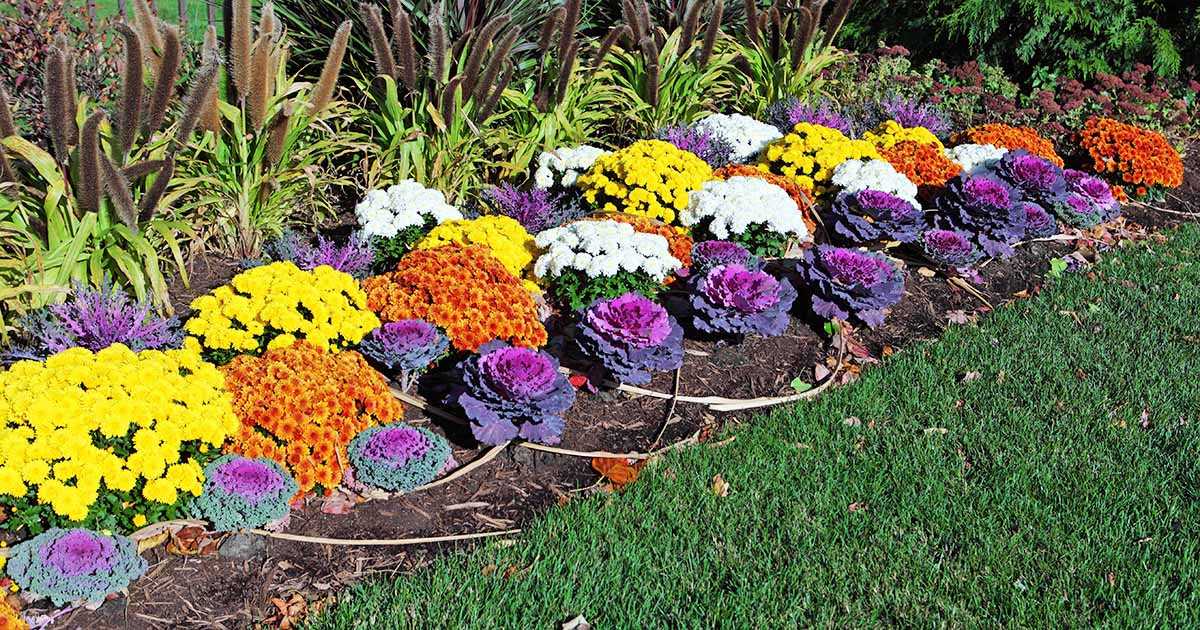

Zinnias are fairly easy to grow and can be started from either seeds or transplants. They prefer well-drained soil and full sun to thrive. It’s important to water zinnias regularly, especially during hot and dry periods, as they are sensitive to drought. Deadheading the spent blooms will encourage more flowers to form.
Uses for Zinnias
Zinnias are versatile flowers that can be used in a variety of ways. They make excellent cut flowers and can be used in floral arrangements or bouquets. Additionally, zinnias attract butterflies and bees, making them a great choice for pollinator gardens.
In Conclusion
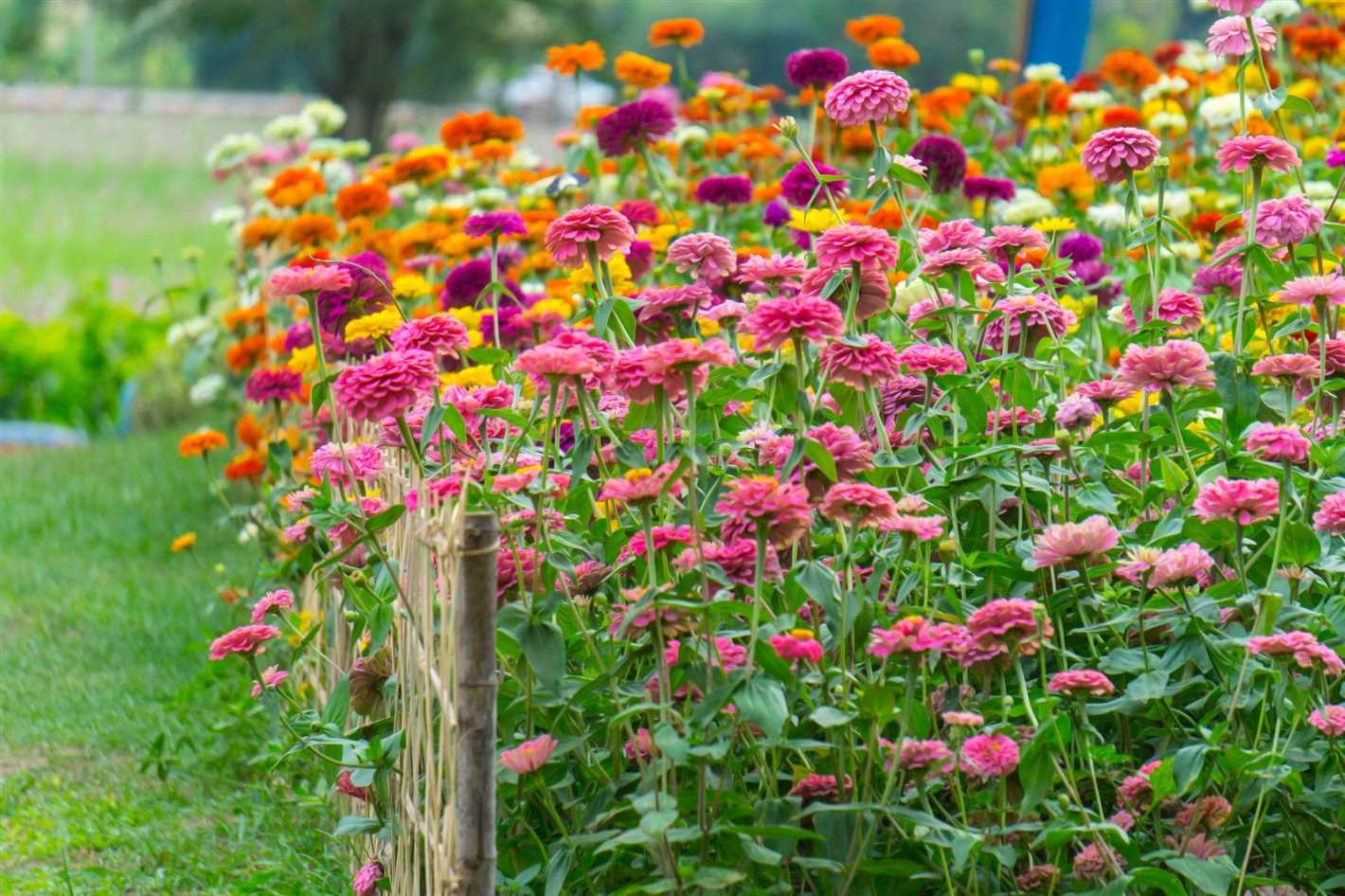

Zinnias are vibrant, colorful annual flowers that can add a pop of color and beauty to any garden. With their wide range of colors and varieties, they are sure to be a standout in your flower beds. Consider planting zinnias in your garden next season to enjoy their long-lasting blooms and easy care.
Cosmos
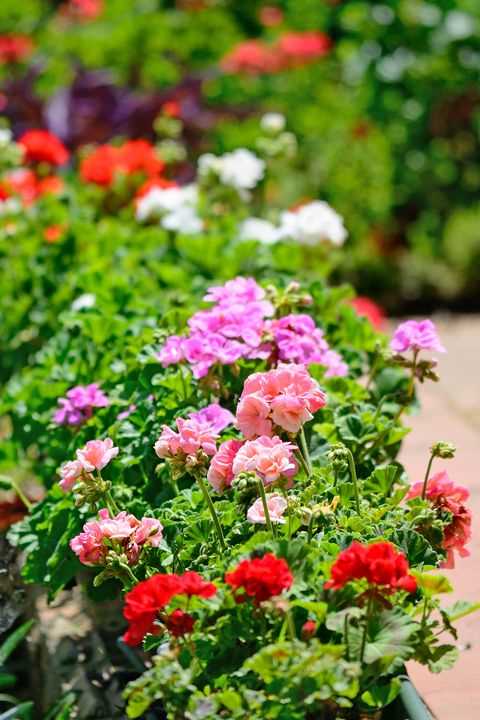

Cosmos is a popular annual flower that is known for its delicate and colorful blooms. It comes in a variety of colors such as pink, white, and purple, and its daisy-like flowers are a favorite among gardeners.
Here are some key features of Cosmos:
- Easy to grow: Cosmos are easy to grow from seeds and can tolerate a variety of soil conditions. They are also relatively low maintenance.
- Long blooming period: Cosmos have a long blooming period, typically from mid-summer to fall. This makes them a great addition to any flower garden.
- Attracts pollinators: The vibrant flowers of Cosmos attract butterflies, bees, and other pollinators to the garden, making it a beautiful and beneficial addition to any landscape.
- Great for cutting: The tall stems of Cosmos make them excellent for cut flower arrangements. They add a touch of beauty and color to any bouquet.
If you decide to grow Cosmos in your garden, here are some tips:
- Choose a sunny spot in your garden as Cosmos thrive in full sun.
- Prepare the soil by removing any weeds and adding organic matter.
- Sow the seeds directly into the soil after the last frost date, or start them indoors 4-6 weeks before the last frost to get a head start.
- Water the plants regularly, keeping the soil evenly moist but not waterlogged.
- Deadhead the flowers to encourage continuous blooming.
- Fertilize the plants with a balanced fertilizer once or twice during the growing season.
With their vibrant colors and easy cultivation, Cosmos are a great choice for adding beauty and charm to your flower garden next season.
Impatiens
Impatiens are popular annual flowers known for their vibrant and long-lasting blooms. They are native to tropical regions and come in a variety of colors, including red, pink, orange, purple, and white. Impatiens are easy to grow and are great for adding a pop of color to your garden or landscape.
Here are some key facts about Impatiens:
- Light Requirements: Impatiens prefer partial shade to full shade, making them ideal for shady areas of your garden.
- Watering Needs: They require regular watering, especially during dry spells. However, be careful not to overwater, as this can lead to root rot.
- Soil Conditions: Impatiens thrive in well-drained, moist soil. They do well in containers, hanging baskets, and flower beds.
- Blooming Season: Impatiens bloom from spring to fall and continue to flower as long as they are cared for properly.
- Height and Spread: The height and spread of Impatiens plants can vary, but most varieties grow to be around 6 to 24 inches tall.
- Planting Tips: When planting Impatiens, make sure to space them apart to allow for proper air circulation. This helps prevent diseases such as powdery mildew.
Impatiens are versatile flowers that can be used in a variety of ways in your garden. They work well as border plants, in flower beds, or as a colorful addition to hanging baskets and containers. Their vibrant blooms and easy maintenance make them a popular choice among gardeners of all skill levels.
Some popular varieties of Impatiens include:
- Sunpatiens
- New Guinea Impatiens
- Bizzie Lizzies
- African Impatiens
These varieties offer different colors, sizes, and growth habits, allowing you to choose the perfect Impatiens for your garden.
In conclusion, Impatiens are a fantastic choice for a colorful flower garden. With their vibrant blooms, easy care, and versatility, they can add beauty and brightness to any landscape. Consider adding Impatiens to your garden next season!
Nasturtiums
Nasturtiums are a popular choice for home gardeners looking to add vibrant color to their flower beds. These annuals come in a variety of beautiful hues, including bright oranges, yellows, and reds, and are known for their large, showy blooms.
One of the main reasons gardeners love nasturtiums is their versatility. These plants can be grown in containers, hanging baskets, or directly in the ground, making them perfect for any garden space. Nasturtiums also have a trailing habit, which makes them ideal for cascading over the edges of containers or spilling out from tall planters.
Another great thing about nasturtiums is their ability to attract pollinators. The vibrant flowers and sweet scent of these annuals make them a favorite among bees, butterflies, and hummingbirds. By planting nasturtiums in your garden, you can help support local pollinator populations.
In addition to their stunning flowers, nasturtiums also have edible leaves and flowers. Both the leaves and flowers have a peppery taste, similar to watercress, and can be used to add a unique flavor to salads, sandwiches, and other dishes. This makes nasturtiums not only beautiful but also functional in the kitchen.
When it comes to growing nasturtiums, they are relatively easy to care for. These plants thrive in full sun or partial shade and prefer well-draining soil. They are also fairly drought-tolerant, making them a great choice for gardens with hot, dry summers.
To get started with nasturtiums, simply sow the seeds directly into the ground after the last frost date. It’s best to plant them in groups, as they tend to look better in clusters rather than individually. Once planted, make sure to water them regularly and keep an eye out for any pests or diseases.
In summary, nasturtiums are a fantastic choice for adding vibrant color to your garden. With their large, showy blooms, versatility, attraction to pollinators, edible leaves and flowers, and easy care requirements, these annuals are sure to be a standout in your flower beds.
Calendula
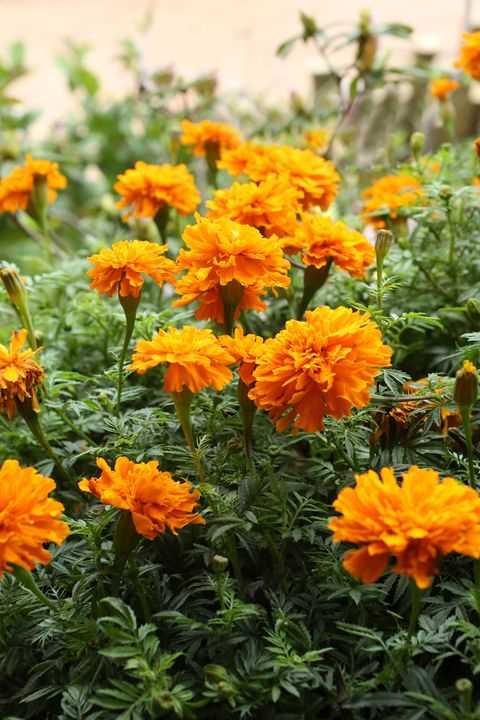

Calendula, also known as pot marigold, is a vibrant annual flower that blooms in various shades of yellow and orange. Its bright and cheerful flowers make it a popular choice for adding color to flower gardens and landscapes.
This hardy plant is easy to grow and requires minimal maintenance, making it a great choice for beginner gardeners. It can tolerate a wide range of soil conditions and is known for its ability to attract pollinators such as bees and butterflies.
Key Features:
- Colorful flowers in shades of yellow and orange
- Easy to grow and low maintenance
- Attracts pollinators
- Tolerant of various soil conditions
Popular Varieties:
There are several popular varieties of calendula, each with its own unique characteristics. Some of the most well-known varieties include:
- Calendula officinalis: The common calendula variety with bright yellow to orange flowers.
- Calendula ‘Bon Bon Mix’: A mix of double flowers in shades of orange, apricot, and cream.
- Calendula ‘Indian Prince’: Deep orange flowers with dark centers.
- Calendula ‘Zeolights’: Bright orange flowers with a unique bicolor effect.
Uses in the Garden:
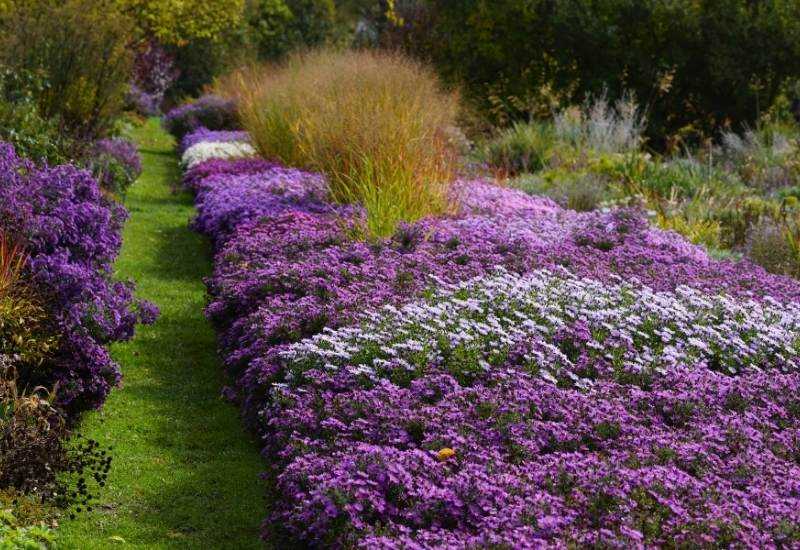

Calendula is a versatile flower that can be used in various ways in the garden:
- Bedding plant: Plant calendula in flower beds and borders for a burst of color.
- Container plant: Grow calendula in containers and pots for a portable splash of color.
- Cut flower: Harvest calendula flowers for bouquets and floral arrangements.
- Companion plant: Calendula can deter pests and attract beneficial insects when planted near vegetables and other flowers.
Growing Tips:
Here are some tips for growing calendula successfully:
- Planting: Start calendula seeds indoors 6-8 weeks before the last frost date or sow them directly in the garden after the danger of frost has passed.
- Light: Calendulas prefer full sun but can tolerate partial shade.
- Soil: They grow well in well-draining soil with a pH between 6.0 and 7.0.
- Watering: Keep the soil evenly moist, but not waterlogged.
- Deadheading: Remove faded flowers to prolong blooming.
With its cheerful blooms and easy-to-grow nature, calendula is a fantastic addition to any flower garden. Consider planting this vibrant annual next season for a burst of color and pollinator activity!
Snapdragons
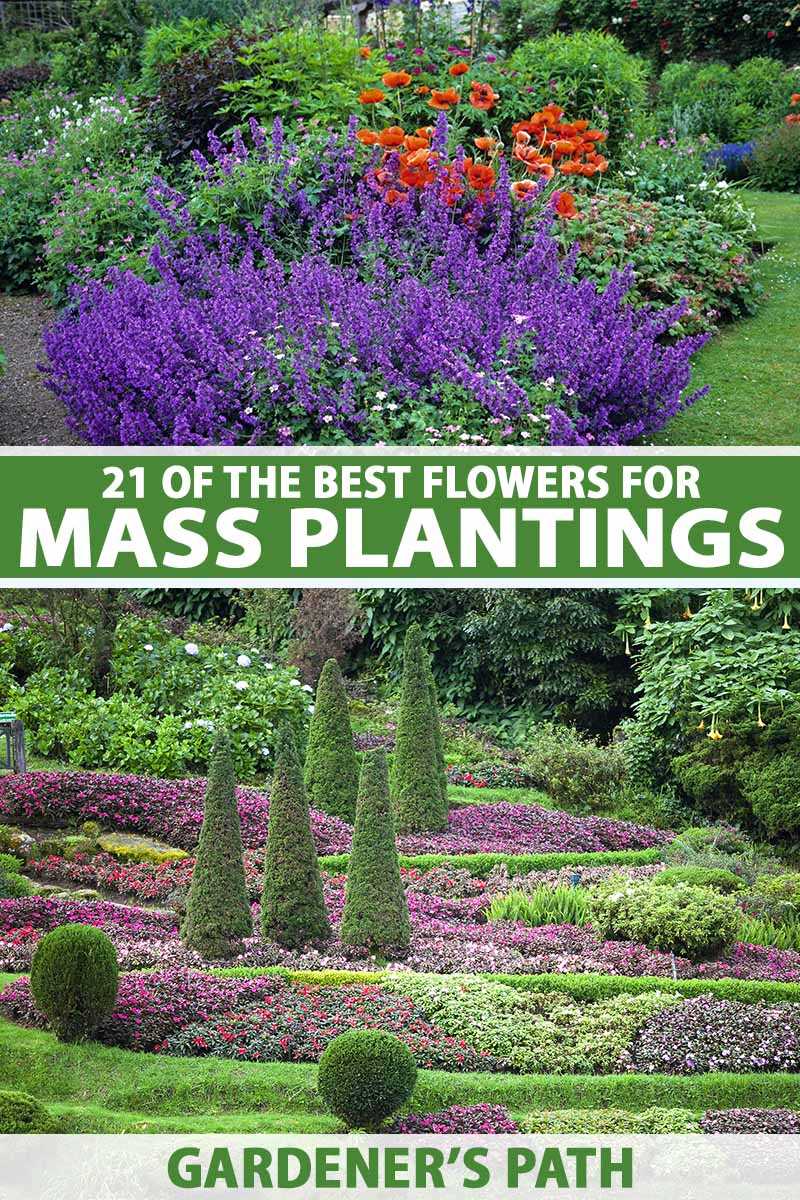

Snapdragons, also known as Antirrhinum, are beautiful annual flowers that come in a variety of vibrant colors. These flowers have unique tubular-shaped blooms that resemble the face of a dragon, hence their name.
Here are some key features of Snapdragons:
- Snapdragons are available in various sizes, ranging from dwarf varieties that grow only a few inches tall to taller varieties that can reach up to 3 feet in height.
- They bloom in a wide array of colors, including red, pink, purple, yellow, and white.
- Snapdragons are known for their long blooming season, making them an excellent choice for adding color to your garden throughout the summer and fall.
- These flowers attract pollinators such as bees and butterflies, making them beneficial for your garden’s ecosystem.
- They are relatively easy to grow and can tolerate a variety of growing conditions, including full sun and partial shade.
- Snapdragons make great cut flowers and can be used in floral arrangements to add a pop of color and texture.
To grow snapdragons, start by selecting a well-drained location in your garden. Prepare the soil by adding compost or organic matter to improve its fertility. Plant the snapdragon seeds or seedlings in the desired location, ensuring they are spaced appropriately to allow for proper growth.
Water the plants regularly, keeping the soil moist but not waterlogged. Deadhead faded flowers to encourage continued blooming. Applying a balanced fertilizer once a month can also help promote healthy growth and vibrant blooms.
| Common Name | Botanical Name |
|---|---|
| Snapdragon | Antirrhinum |
In conclusion, snapdragons are a fantastic addition to any flower garden due to their vibrant colors, unique shape, and long blooming season. Whether you choose to grow them in containers or in the ground, these beautiful flowers are sure to attract attention and add a touch of charm to your outdoor space.
Questions and Answers:
What are the best annual flowers to plant in a flower garden?
Some of the best annual flowers to plant in a flower garden include petunias, marigolds, zinnias, impatiens, snapdragons, and cosmos.
What colors do annual flowers come in?
Annual flowers come in a wide range of colors, including red, orange, yellow, pink, purple, and white.
How often do annual flowers need to be watered?
Annual flowers generally need to be watered once or twice a week, depending on the weather and soil conditions.
Can annual flowers be grown in pots or containers?
Yes, many annual flowers can be grown in pots or containers, making them a great choice for small gardens or balconies.
Are annual flowers easy to care for?
Yes, most annual flowers are relatively easy to care for. They require regular watering, occasional fertilizing, and deadheading to promote continuous blooming.
When is the best time to plant annual flowers?
The best time to plant annual flowers is in the spring, after the threat of frost has passed and the soil has warmed up.







